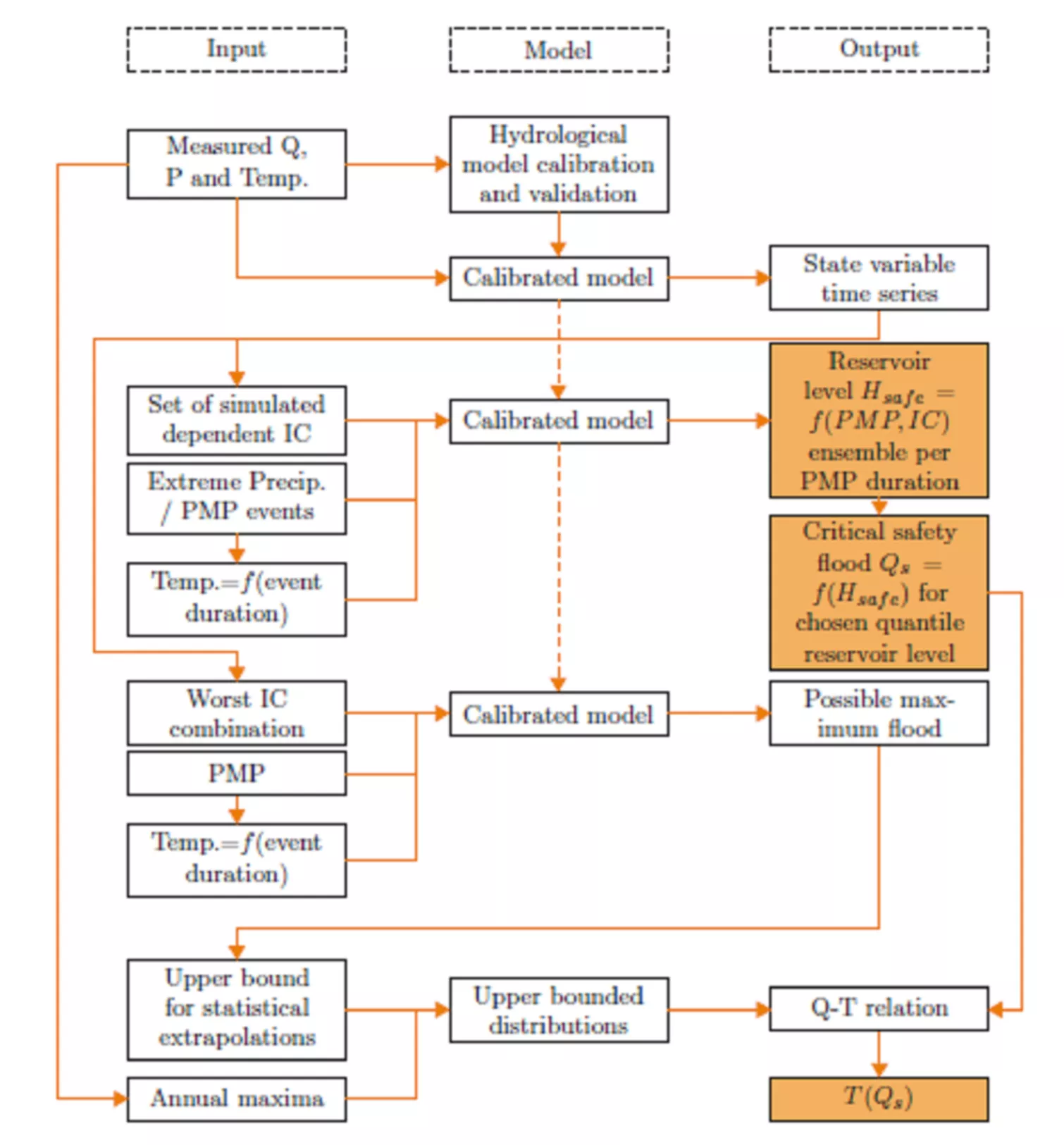CRUEX++
Estimate extreme flooding in Alpine catchments for the verification of dam safety
The success of each operator depends in the long term on the safety of structures and facilities, whether structural or supply. Stucky supports you in carrying out safety verification studies for your hydroelectric installations based on confirmed knowledge of the scientific state of the art. The safety of structures is the foundation on which your success is built.
In terms of estimating extreme floods, the supervising authority in charge has adapted its directives to new scientific standards. At Gruner and Stucky, our hydrology experts can perform extreme flood estimates using high-performance hydrological models and the most recent methodologies (CRUEX ++). Indeed our experts have contributed to the development of these methodologies and to the introduction of these new methodologies into current best practice.
At Gruner, we can now offer the CRUEX++ as a service, CRUEX++ is a new methodology that was recently developed to estimate extreme flooding in alpine catchments for the verification of dam safety.
A little context, why do you need to estimate extreme flooding?
In Switzerland, 162 large dams (height over 15 m according to the definition adopted by the International Commission on Large Dams) have been constructed in the past. Knowing that Switzerland has a surface of 41'285 km2, this roughly corresponds to 20 dams per 5'000 km2. This is among the highest dam densities in the world.. In comparison to the European leading hydroelectricity producer, Norway, the large dam density is approximately 4 dams per 5'000km2. In China, the world leading hydroelectricity producer, the dam density raises to 11.5 dams per 5'000km2.
Due to the high dam density in Switzerland combined with a high population density, flood safety is a critical topic for Swiss engineers and the knowledge of guaranteeing it is a necessity. In the early nineties, the technological and scientific progresses allowed to initiate a research project on the topic of extreme flood estimations with the probable maximum precipitation-probable maximum flood (PMP-PMF) approach. This project was called CRUEX and was funded by the formerly called Federal Office for Water and Geology (FOWG), currently named Federal Office for the Environment (FOEN). Besides the elaboration of PMP maps for Switzerland, different models and methods have been developed. In the year 2012, the methodological developments in the domain of extreme flood estimations for dam safety verifications are still not totally completed. This led the Swiss Federal Office of Energy (SFOE) to the decision to initiate the CRUEX++ research project in 2012. The goal was to develop a clear and reliable methodology for the estimation of extreme floods for dam safety verifications that can compensate for the current lacks. The CRUEX++ project was interdisciplinary and could profit from the collaboration of different actors from various fields who were already involved in earlier developments phases at EPFL (Ecole Polytechnique Fédérale de Lausanne).
Improving Dam Safety
In the context of dam safety, reliable safety flood estimation methods are necessary to guarantee a sufficiently designed spillway capacity. Today’s state-of-the-art allows us to approach this topic from different angles.
Statistical extrapolations are common practice, but do not guarantee that all needs of dam safety verifications will be addressed. Due to the evolution of data analytics in recent years, computational power has been pushed to a level where hydrological modelling can be performed under optimal conditions. Practitioners are, however, not yet very familiar with hydrological modelling and its potential is not fully exploited.
The research work on CRUEX++ developed an approach combining statistics and hydrological modelling techniques to propose an innovative ready-to-use methodology to address the complex issue of extreme flood estimations.
Why use CRUEX++ compared to other approaches?
The main advantage of the methodology is that it allows us to estimate extreme flood hydrographs using hydrological simulation and to plausibly attribute a return period to the simulated peak discharge taking a deterministically determined upper discharge limit into account by referring to the PMP-PMF approach. The methodology combines thus the possibility of flood attenuation estimations with the knowledge of the occurrence probability of the peak discharge of the event, which is normally a reference quantity in flood safety guidelines. In simpler terms, CRUEX++ is more accurate and more complete than previous methodologies.
Our team, including Dr Fränz Zeimetz who developed the methodology for his doctoral thesis, is at your disposal to advise you and indeed, carry out studies and verifications that meet the recent requirements of the authorities. Many operators have already trusted us.


